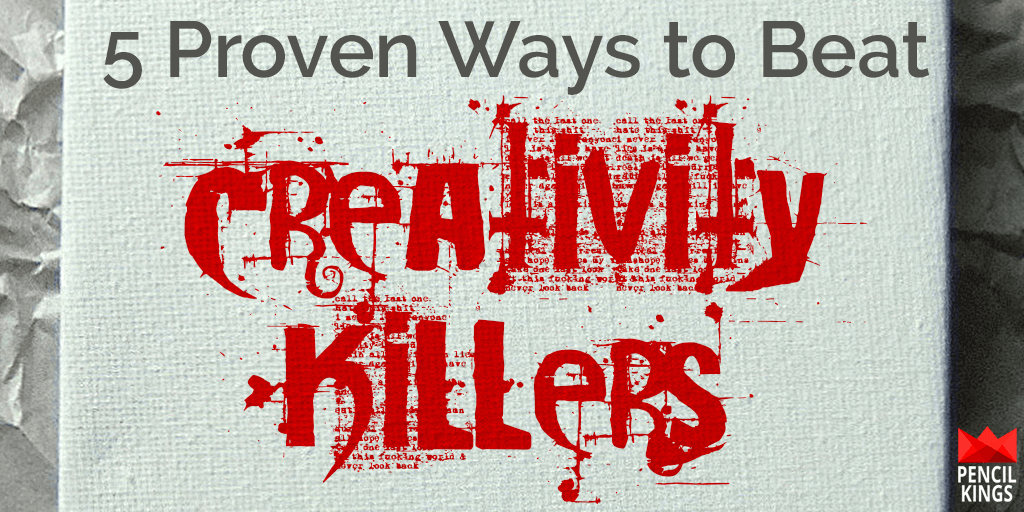“If you hear a voice within you say you cannot paint, then by all means paint and that voice will be silenced.”
Vincent van Gogh
Creativity killers. They’re the Kryptonite of any artist. And, as we’ve all experienced, sometimes it can seem like there are more reasons not to paint than to pick up that brush!
So how do you keep these dark, marauding gremlins at bay? How do you stand up to them, look them in the (metaphorical) eye and tell them you won’t – just won’t – be beat?
The answers are simpler than you think, but you’re going to have to brace yourself for the long haul, soldier. Because tackling creative anxiety and slaying those creativity killers is something every artist has to learn with. In fact, our hang-ups and doubts are part and parcel of who we are.
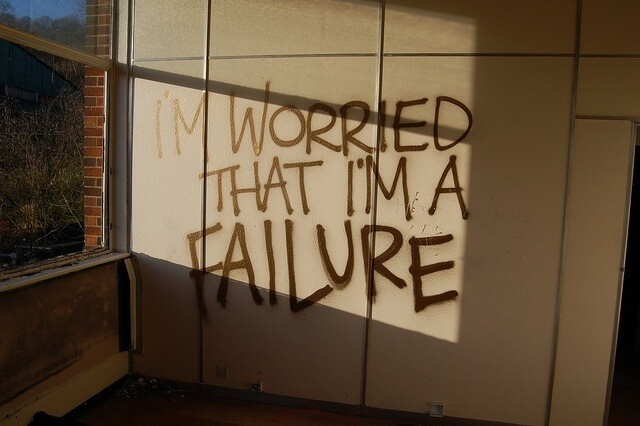
1. I’m Just Not Good Enough To Be An Artist
How many times have you heard other people say this? In fact, how many times have you said it yourself?
As artists, we’re wracked by self-doubt and creative anxiety every single time we start a new project. You know the drill by now. You know you want to be more creative, your heart is telling you that you need to be more creative and your ever-practical, ever-logical mind is telling you that you’ll never make it as an artist unless you, erm, actually do some work.
Yet, despite the best wishes of our hearts and minds, there’s something even more powerful lurking in the shadows like an evil clown – a creativity killer called ‘doubting your own artistic abilities.’
Where does this creativity killer come from? And how can you send it back to evil clown land? The roots of self-doubt often stem from early experiences where people have reacted unfavorably or indifferently to your art. And, as a creative person, you’ve probably built these unfortunate early experiences up into something they’re not.
In some ways, your own worst enemy here is the same imagination that helps you come up with awesome art ideas in the first place. Interestingly, this very topic was the subject of research carried out at the Surrey Institute of Clinical Hypnotherapy in the UK. After studying 328 people who were prone to anxiety, specialist Paul Howard found that a large amount of these (88 percent), described themselves as creative.
How can you stop this creativity killer in its tracks? The answer lies in letting go of past ‘failures’ and forgetting about them. So your teacher in Seventh Grade said you don’t have what it takes to be an artist? So what? They’re not here now – it’s just you and a blank canvas. Just start creating something – anything – and don’t worry for now about what anyone else thinks.
Don’t sweat it if your drawing or painting doesn’t come out right. Treat each new project as a way to improve and move on. In art, there are no ‘fails’ – just opportunities to learn more and keep progressing. You may not have perfected how to draw a mouth perfectly yet, but you will. There’s no doubt about that.
Fear and art go hand in hand like colors and canvas. The most important step you can take is to realize this: If you’re scared about a project, you’re already on the road to starting work on it. Even the world’s most successful painters, musicians, authors and actors feel petrified by the prospect of going on stage or releasing a new project upon the public. In fact, some actors have even been known to turn down roles that didn’t fill them with anxiety. Why? Because they knew the project wouldn’t excite them if it didn’t scare the hell out of them first.

Pic courtesy of Giuliano Maiolini
2. I Just Don’t Know What To Paint
Not knowing what to paint or draw is another all-powerful creativity killer. You ask yourself questions such as ‘What should my art be about?’ or ‘What am I trying to represent?’
Here’s our advice: Stop thinking about it and start making marks – the rest will follow in due course.
If you’re completely stuck for what to draw or paint, here’s a great suggestion that’s never failed us in times of creative anxiety. Here’s what you do:
- Take an A4 sized paper envelope (or any other large envelope).
- Leave your house and go on a hunt for interesting objects to put in it. These can be anything you like – discarded candy wrappers, drinks cans, an old piece of rope, an abandoned child’s toy etc.
- Keep going until the envelope is full of stuff and then return home to your workspace.
- Cut a square or rectangle in the envelope so you can see the random collection of objects inside.
- Paint or draw what you see. You can even angle a desk lamp to give you more contrast between light and shade.
This may not sound like much, but trust us on this. Not only will this help improve your drawing and painting skills (especially if you’re depicting things and textures you haven’t painted before), it’ll also help you work out dramatic compositions. Feel free to shake the envelope up if you don’t like what you see – you’re sure to hit upon an interesting combination eventually.
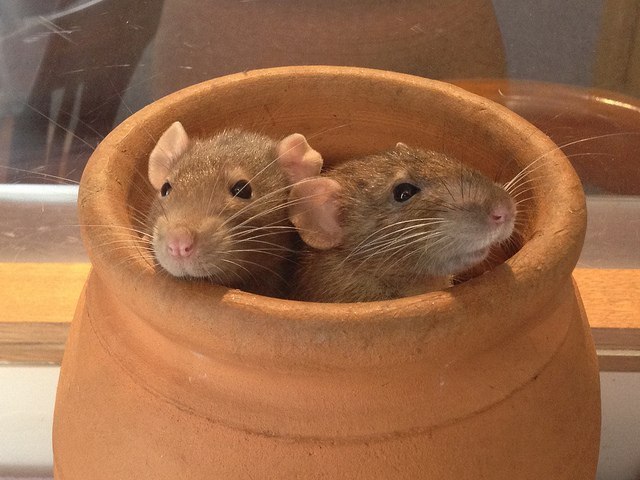
Pic courtesy of Erin Stromberg, Smithsonian’s National Zoo
3. I Don’t Think I’m Clever Enough To Be Creative
People often associate creativity with genius, but scientific research suggests otherwise. In fact, studies have revealed that once a person’s IQ is just above average (around 120), there’s no link between the two whatsoever.
This research is also backed up in studies by Andrew and Gaia Grant, co-authors of the book Who Killed Creativity? ,who analyzed 300,000 Torrance scores (devised more than 50 years ago by American psychologist, E Paul Torrance) and made some interesting findings.
Amazingly, they discovered that although IQ scores rose in line with creativity scores until 1990, there has been a sharp decline ever since. It seems this decline is strongly linked to creativity in childhood, meaning that those pencil scribbles you made when you were five years’ old can say more about your future artistic ability than your IQ.
We know what you’re thinking here: But what about all those artistic intellectuals – the philosophers, the dudes who founded new art movements and came up with radical ideas? It’s true that all these people were highly intelligent individuals, but they were also highly creative individuals who let their imagination run free in order to come up with awesome ideas.
Don’t let this creativity killer get the better of you. You don’t have to be a genius to be creative, but creativity can often bring out the genius in you!
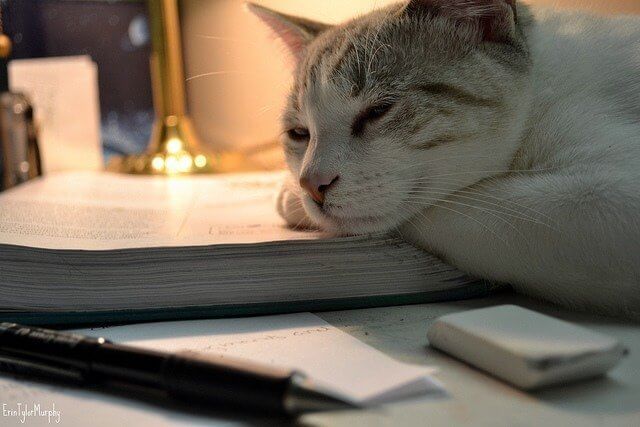
Pic courtesy of Erin Murphy
4. Everyone Else Is So Much Better Than Me!
We know the feeling. It’s a classic creativity killer. You’re looking at the work of fellow students or well-known artists and you’re thinking: ‘How can I ever compete with that?’
Here’s the thing: It’s not a competition. Everyone’s art is different and everyone has a different way of seeing things. Rather than judge yourself against the work of others, try and take some positives from it. You like the way they’ve painted the eyes in that portrait? Look at how they did it, study their techniques, and then apply these to your own work.
Don’t worry about originality. Every single form of art is derivative in some respect – it’s jusy how you take those influences and make them your own. No matter how many techniques you learn, you’ll always be able to put your own spin on it. It’s what makes you, as an artist, an individual. Who knows, you might even inspire the people who you think are better artists than you!
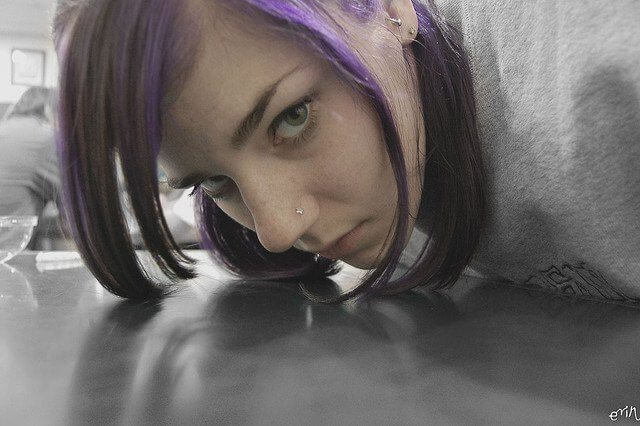
Pic courtesy of Erin
5. My Work Is Never As Good As I Want It To Be
Here’s another classic creativity killer. In fact, it’s possibly the most difficult one to beat. How come? Because, in many ways, it’s true.
So what can you do about it? Here’s the thing to bear in mind. You’ll probably never be 100 percent happy with the work you’ve produced – not then, not now and not tomorrow. However, rather than being a bad thing, this is actually a very good thing – it’s what inspires you to move on to the next project.
It’s been said by many artists that ‘an artist rarely finishes his work; he merely abandons it’. What does this really mean to you? It means that each ‘finished’ project is the start of a new one where you can take what you’ve learned and use it to create something better or different.
In many ways, the day you’re truly happy with your art is the day you stop making it. After all, if you’ve learned everything there is to learn, there’s no point in doing any more, right?
As you almost certainly already know, no-one ever reaches this stage. There is always something new to inspire you or a different way of looking at things that you hadn’t noticed or considered before.
This doesn’t mean you should quit working on a project just because it’s not turning out right, though. It’s important to keep fighting on, correcting elements of your painting that don’t work as well as they should and re-working things until you reach a certain stage of satisfaction.
Remember you’ll never be completely satisfied with what you produce. There will always be a color you could have made brighter, or a brushstroke you could have made different. The key lies in getting to a stage where you can live with what you’ve created, but feel ready to take this experience onto your next project.
What’s your biggest creativity killer and how have you beaten it?
Let us know in the box below!
